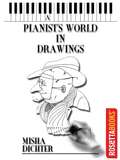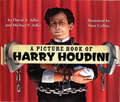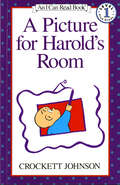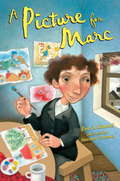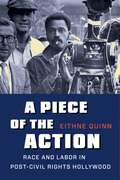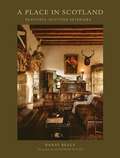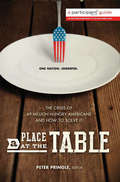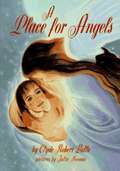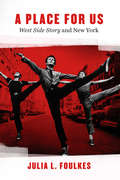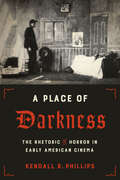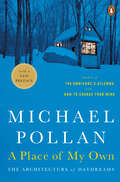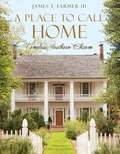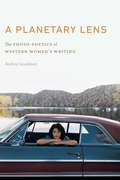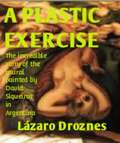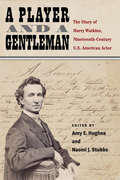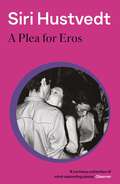- Table View
- List View
A Photographic Journey Through the London Underground: Look Again
by Elke Rollmann Niko RollmannWHAT IS THERE TO SEE? That was the question the authors of this book, Elke and Niko Rollman, heard all the time when explaining their photographic project. The answer is LOOK AGAIN, this book will encourage its readers to see the London Underground in a different light. There is indeed a multitude of images on offer, ranging from architecture to technology, from old design classics to modern art. For anyone interested in the history of the London Underground, spanning over 150 years, this is the book for you. Once you discover the beauty of this particular underworld, it can turn your daily routine into an exciting and almost endless trail of new impressions. The authors also want to encourage readers to go out there and explore "The Tube" by themselves. Photographer Elke Rollmann and historian Niko Rollmann - have spent over 10 years exploring this iconic network of the London Underground with their cameras aiming to catch as many different aspects of the system as possible. A lot of time also went into researching the Underground's complex history . This publication is not just about the network as such, but also about the people who work there and, of course, the commuters. A timeline and a further reading list complement the images and texts.
A Physical Approach to Color Image Understanding
by Gudrun J. KlinkerThe author presents a vision model that uses color information to interpret the effects of shading and highlights on a scene. Transcending more traditional approaches, this method may lead to more reliable and useful techniques for image understanding.
A Pianist’s World in Drawings
by Misha DichterOne of the world's foremost concert pianists, Misha Dichter is also a celebrated artist--who has documented his life and musical career in witty and insightful black and white sketches for over 40 years. Many of the drawings have appeared to high acclaim in New York art galleries, and in A Pianist's World in Drawings, the artist's complete body of work is now available to fans, art aficionados, and collectors for the first time. This collection provides readers with an astute and perceptive visual account of the artist's life onstage, on the road, and behind the curtain. The accompanying captions and anecdotes deliver a fascinating and humorous perspective on the life of a high-profile professional musician. Dichter's drawings have been compared to those of New Yorker artists Saul Steinberg and George Grosz, both of whom bring a perspective of playful satire to their work. Screenwriter Marshall Brickman writes, "Not content with being one of our premiere concert artists, Misha Dichter has the temerity also to be a brilliant graphic artist. His drawings display all the grace, wit, and sureness of style we've come to expect form his performances. He has captured his world in a series of keenly and often hilariously observed drawings filled with wry insight. This is a collection for lovers of both music and graphic art. Move over, Saul Steinberg - there's a new guy on the block." "Misha Dichter shakes his diligent classical piano training to 'play' freely in his drawings. The joy we feel looking at them is rooted in the pleasure he takes making them. They are his record of trips taken, important moments, and the music world he knows so well. The drawings share the playfulness of Paul Klee and Saul Steinberg mixed with the social commentary of George Grosz." --James Goodman "I always enjoyed Misha's drawings. I found them artistic and so clever. Every time I look at them I say 'Aha! So true!' These cartoons are timeless." --Itzhak Perlman ABOUT THE AUTHOR Misha Dichter's family is from Poland--but he was born in Shanghai in 1945, after his Jewish parents fled the country at the onset of World War II. A few years later the family moved to Los Angeles--where he began piano lessons at the age of six. He later enrolled in The Juilliard School, studying under Rosina Lhevinne, and won the Silver Medal in the 1966 Tchaikovsky Competition--launching an acclaimed international career. Today, Mr. Dichter has performed with almost every major orchestra in the world. His critically-applauded classical recordings with MusicMasters, Koch Classics, Philips, and RCA display a passionate and nuanced interpretation of Brahms, Liszt, Gershwin, Beethoven, Stravinsky, Tchaikovsky, Schumann, Schubert, and other master composers. His frequent duo-piano performances with his wife, pianist Cipa Dichter, take him to festivals and concert halls throughout Europe and North America. Their first recording together, a three-CD album of Mozart's complete piano works for four hands released under the Musical Heritage Society label, was named 2005 Record of the Year by Music Web International. Mr. Dichter is also an accomplished writer--having contributed articles to renowned publications including The New York Times.
A Pictorial Encyclopedia of Decorative Ironwork: Twelfth Through Eighteenth Centuries
by Otto HoeverAlthough the most conspicuous productions of smithcraft are rarely the outcome of the ironworker's own designs, nevertheless, ironwork translates into material of many artistic conceptions, and reflects the art of various style-epochs and countries. This work, originally published in 1927 as An Encyclopedia of Ironwork, includes more than 450 black-and-white photographs, all royalty-free, and show ironwork masterpieces from all over Europe -- doors, gates, railings, grilles, door knockers, locks, lanterns, candelabra, firedogs, chandeliers, and much more. There are beautiful examples from Notre Dame; Chichester Cathedral; Barcelona Cathedral; Frederiksborg Castle in Denmark; Versailles; and scores of other sites.
A Pictorial History of Costume From Ancient Times to the Nineteenth Century: With Over 1900 Illustrated Costumes, Including 1000 in Full Color (Dover Pictorial Archive Ser.)
by Wolfgang Bruhn Max TilkeA classic in its field, this splendid guide to fashion history takes readers on a grand tour of the world, starting in ancient Egypt, circa 2200 B.C., and continuing on to the late nineteenth century. Handsome, accurately rendered illustrations depict a vast treasure trove of wearing apparel — furs, veils, ruffs, pointed bodices, and sashes abound, as do cloaks, leggings, waistcoats, breeches, military uniforms, and assorted head- and footwear.All levels of society are included in this thorough, panoramic display of past fashions — from peasants and the middle class to the nobility. Here is apparel that clothed inhabitants of Far East kingdoms, gladiators of the Roman Empire, Crusaders of the Middle Ages, Dutch citizens of the 1600s, and Parisian society in the late 1700s. More than 1,900 costumes are shown, including fashions from ancient Assyria, Babylonia, Persia, and Greece, as well as clothing from England, France, Germany, Turkey, Italy, and other European countries.An essential reference for costume designers and students of fashion history, this detailed survey will particularly delight the armchair time traveler.
A Picture Book of Harry Houdini (Picture Book Biography)
by David A. Adler Michael S. AdlerHarry Houdini astounded audiences around the globe with his death-defying acts and illusions. With his wife, Bess, often by his side, he freed himself from ropes, handcuffs, straitjackets, and prison cells. Once he even made a ten-thousand-pound elephant vanish into thin air! Yet Harry's life was not always so glamorous. When he was a boy, he shined shoes and did odd jobs to help make ends meet. But a career in magic was always in the cards for Harry. Readers will be mesmerized by this captivating biography of one of the most celebrated escape artists and magicians in history.
A Picture Of Britain: n/a
by David DimblebyAccompanying a major BBC1 series presented by David Dimbleby, and an exhibition at Tate Britain, A Picture of Britain is a celebration of the British landscape and the art that it has inspired, from Constable to Lowry, from Turner to Nash. From the slopes of Snowdonia to the industrial Black Country, from the grandeur of the Scottish Highlands to the meadows of Suffolk, the British landscape has inspired artists and writers for generations. This remarkable book, read by all four contributors, captures our rich cultural heritage, creating for the listener A Picture of Britain.(p) 2006 Orion Publishing Group
A Picture for Harold's Room (I Can Read Level 1)
by Crockett JohnsonFrom the treasured author of Harold and the Purple Crayon, Crockett Johnson, comes an I Can Read adventure for Harold and his magical purple crayon.Harold needs a picture for his bedroom wall, so he takes his purple crayon and begins to create a whole new world around him. But then he notices he has gotten very small—half the size of a daisy! Only a very clever artist could find his way home now.This Level 1 I Can Read imagination-sparking adventure is perfect for the beginning reader learning to sound out words and sentences. Whether shared at home or in a classroom, the short sentences, familiar words, and simple concepts of Level One books support success for children eager to start reading on their own.
A Picture for Marc
by Eric A. KimmelGROWING UP IN Russia in the late 1800s, Marc Chagall doesn't know what art is. He doesn't even know whatdrawingis until one of his schoolmates shows him how to trace a picture in a magazine. Marc tries it himself, then decides to pull pictures out of his own mind - his Uncle Noah on the roof, giant chickens, flying cows, happy men with fiddles, and women with lambs. Suddenly Marc knows what he wants to do with his life. He wants to be an artist! From the Hardcover edition.
A Piece of the Action: Race and Labor in Post–Civil Rights Hollywood
by Eithne QuinnHollywood is often thought of—and certainly by Hollywood itself—as a progressive haven. However, in the decade after the passage of the Civil Rights Act, the film industry grew deeply conservative when it came to conflicts over racial justice. Amid black self-assertion and white backlash, many of the most heated struggles in film were fought over employment. In A Piece of the Action, Eithne Quinn reveals how Hollywood catalyzed wider racial politics, through representation on screen as well as in battles over jobs and resources behind the scenes.Based on extensive archival research and detailed discussions of films like In the Heat of the Night, Sweet Sweetback’s Baadasssss Song, Super Fly, Claudine, and Blue Collar, this volume considers how issues of race and labor played out on the screen during the tumultuous early years of affirmative action. Quinn charts how black actors leveraged their performance capital to force meaningful changes to employment and film content. She examines the emergence of Sidney Poitier and other African Americans as A-list stars; the careers of black filmmakers such as Melvin Van Peebles and Ossie Davis; and attempts by the federal government and black advocacy groups to integrate cinema. Quinn also highlights the limits of Hollywood’s liberalism, showing how predominantly white filmmakers, executives, and unions hid the persistence of racism behind feel-good stories and public-relations avowals of tolerance. A rigorous analysis of the deeply rooted patterns of racial exclusion in American cinema, A Piece of the Action sheds light on why conservative and corporate responses to antiracist and labor activism remain pervasive in today’s Hollywood.
A Place In Scotland: Beautiful Scottish Interiors
by Banjo BealeA Place in Scotland is a collation of interior spaces that represent a rejuvenated Scottish vernacular that has emerged over the past twenty years. Something is happening in Scotland – a new confidence – and inspirational voices are redefining what 'Scottish style' really is. Banjo and Alexander see this manifesting in homes and public spaces alike. Spanning the breadth of Scotland, they have picked places that tell a story, highlight sustainable design and represent a considered style that can be recreated at home. Including thirty different spaces, from a masterfully restored Scottish castle and the Gleneagles hotel to a World War 2 control tower in the Scottish Highlands and a brightly coloured tenement apartment in Glasgow, A Place in Scotland is a celebration of clever and contemporary design. All these beautifully photographed places will not only give you interiors inspiration, but take you on a stunning journey through Scotland.
A Place at the Table: The Crisis of 49 Million Hungry Americans and How to Solve It
by Peter Pringle Participant MediaForty-nine million people#151;including one in four children#151;go hungry in the U. S. every day, despite our having the means to provide nutritious, affordable food for all. Inspired by the acclaimed documentaryA Place at the Table, this companion book offers powerful insights from those at the front lines of solving hunger in America, including: Jeff Bridges, Academy Award#150;winning actor, cofounder of the End Hunger Network, and spokesperson for the No Kid Hungry Campaign, on raising awareness about hunger Ken Cook, president of Environmental Working Group, unravels the inequities in the Farm Bill and shows how they affect America’s hunger crisis Marion Nestle, nutritionist and acclaimed critic of the food industry, whose latest work tracks the explosion of calories in today’s #147;Eat More” environment Bill Shore, Joel Berg, and Robert Egger, widely-published anti-hunger activists, suggest bold and diverse strategies for solving the crisis Janet Poppendieck, sociologist, bestselling author, and well-known historian of poverty and hunger in America, argues the case for school lunch reform Jennifer Harris, of Yale University’s Rudd Center for Food Policy and Obesity, uncovers the new hidden persuaders of web food advertisers David Beckmann, head of Bread for the World, andSarah Newman, researcher onA Place at the Table, explore the intersection of faith and feeding the hungry Mariana Chilton, Philadelphia pediatrician and anti-hunger activist, tells the moving story of her extraordinary lobby group, Witnesses to Hunger Tom Colicchio, chef and executive producer of television’sTop Chef, presents his down-to-earth case to Washington for increases in child nutrition programs Andy Fisher, veteran activist in community food projects, argues persuasively why we have to move beyond the charity-based emergency feeding program Kelly Meyer, cofounder of Teaching Gardens, illuminates the path to educating, and providing healthy food for, all children Kristi Jacobson and Lori Silverbush, the film’s directors/producers, tell their personal stories of how and why they came to make the documentary Hunger and food insecurity pose a deep threat to our nation. A Place at the Tableshows they can be solved once and for all, if the American public decides#151;as they have in the past#151;that making healthy food available, and affordable, is in the best interest of us all.
A Place for Angels
by Clyde Robert BullaClaudine's father creates an angel that looks like her dead mother and then a series of angel sculptures that take on a special significance for her when she goes to live with her aunt after her father's death.
A Place for Us: “West Side Story” and New York
by Julia L. FoulkesFrom its Broadway debut to the Oscar-winning film to countless amateur productions, West Side Story is nothing less than an American touchstone--an updating of Shakespeare vividly realized in a rapidly changing postwar New York. That vision of postwar New York is at the heart of Julia L. Foulkes's A Place for Us. A lifelong fan of the show, Foulkes became interested in its history when she made an unexpected discovery: scenes for the iconic film version were shot on the demolition site destined to become part of the Lincoln Center redevelopment area--a crowning jewel of postwar urban renewal. Foulkes interweaves the story of the creation of the musical and film with the remaking of the Upper West Side and the larger tale of New York's postwar aspirations. Making unprecedented use of director and choreographer Jerome Robbins's revelatory papers, she shows the crucial role played by the political commitments of Robbins and his fellow gay, Jewish collaborators, Leonard Bernstein and Arthur Laurents. Their determination to evoke life in New York as it was actually lived helped give West Side Story its unshakable sense of place even as it put forward a vision of a new, vigorous, determinedly multicultural American city. Beautifully written and full of surprises for even the most dedicated West Side Story fan, A Place for Us is a revelatory new exploration of an American classic.
A Place of Darkness: The Rhetoric of Horror in Early American Cinema
by Kendall R. Phillips&“An illuminating history . . . it&’s clear that the right story can still terrify us; A Place of Darkness is a primer on how the movies learned to do it.&” —NPR Horror is one of the most enduringly popular genres in cinema. The term &“horror film&” was coined in 1931 between the premiere of Dracula and the release of Frankenstein, but monsters, ghosts, demons, and supernatural and horrific themes have been popular with American audiences since the emergence of novelty cinematographic attractions in the late 1890s. A Place of Darkness illuminates the prehistory of the horror genre by tracing the way horrific elements and stories were portrayed in films prior to the introduction of the term &“horror film.&” Using a rhetorical approach that examines not only early films but also the promotional materials for them and critical responses to them, Kendall R. Phillips argues that the portrayal of horrific elements was enmeshed in broader social tensions around the emergence of American identity and, in turn, American cinema. He shows how early cinema linked monsters, ghosts, witches, and magicians with Old World superstitions and beliefs, in contrast to an American way of thinking that was pragmatic, reasonable, scientific, and progressive. Throughout the teens and twenties, Phillips finds, supernatural elements were almost always explained away as some hysterical mistake, humorous prank, or nefarious plot. The Great Depression of the 1930s, however, constituted a substantial upheaval in the system of American certainty and opened a space for the reemergence of Old-World gothic within American popular discourse in the form of the horror genre, which has terrified and thrilled fans ever since. &“[A] fascinating read.&” —Sublime Horror
A Place of Darkness: The Rhetoric of Horror in Early American Cinema
by Kendall R. Phillips&“An illuminating history . . . it&’s clear that the right story can still terrify us; A Place of Darkness is a primer on how the movies learned to do it.&” —NPR Horror is one of the most enduringly popular genres in cinema. The term &“horror film&” was coined in 1931 between the premiere of Dracula and the release of Frankenstein, but monsters, ghosts, demons, and supernatural and horrific themes have been popular with American audiences since the emergence of novelty cinematographic attractions in the late 1890s. A Place of Darkness illuminates the prehistory of the horror genre by tracing the way horrific elements and stories were portrayed in films prior to the introduction of the term &“horror film.&” Using a rhetorical approach that examines not only early films but also the promotional materials for them and critical responses to them, Kendall R. Phillips argues that the portrayal of horrific elements was enmeshed in broader social tensions around the emergence of American identity and, in turn, American cinema. He shows how early cinema linked monsters, ghosts, witches, and magicians with Old World superstitions and beliefs, in contrast to an American way of thinking that was pragmatic, reasonable, scientific, and progressive. Throughout the teens and twenties, Phillips finds, supernatural elements were almost always explained away as some hysterical mistake, humorous prank, or nefarious plot. The Great Depression of the 1930s, however, constituted a substantial upheaval in the system of American certainty and opened a space for the reemergence of Old-World gothic within American popular discourse in the form of the horror genre, which has terrified and thrilled fans ever since. &“[A] fascinating read.&” —Sublime Horror
A Place of My Own
by Michael PollanMichael Pollan's unmatched ability to draw lines of connection between our everyday experiences--whether eating, gardening, or building--and the natural world has been the basis for the popular success of his many works of nonfiction, including the genre-defining bestsellers The Omnivore's Dilemma and In Defense of Food. With this updated edition of his earlier book A Place of My Own, readers can revisit the inspired, intelligent, and often hilarious story of Pollan's realization of a room of his own--a small, wooden hut, his "shelter for daydreams"--built with his admittedly unhandy hands. Inspired by both Thoreau and Mr. Blandings, A Place of My Own not only works to convey the history and meaning of all human building, it also marks the connections between our bodies, our minds, and the natural world. Coming from The Penguin Press in 2013, Michael Pollan’s newest book Cooked: A Natural History of Transformation--the story of our most trusted food expert’s culinary education .
A Place of My Own: The Architecture of Daydreams
by Michael PollanMichael Pollan's unmatched ability to draw lines of connection between our everyday experiences- whether eating, gardening, or building-and the natural world has been the basis for the popular success of his many works of nonfiction, including the genre-defining bestsellers The Omnivore's Dilemma and In Defense of Food. With this updated edition of his earlier book A Place of My Own, readers can revisit the inspired, intelligent, and often hilarious story of Pollan's realization of a room of his own-a small, wooden hut, his "shelter for daydreams"-built with his admittedly unhandy hands. Inspired by both Thoreau and Mr. Blandings, A Place of My Own not only works to convey the history and meaning of all human building, it also marks the connections between our bodies, our minds, and the natural world.
A Place of My Own: The Education of an Amateur Builder
by Michael PollanAt a turning point in his life, writer Michael Pollan found himself dreaming of a small wood-frame hut in the woods near his house--a place to work, but also a "shelter for daydreams." Weaving the practical with the philosophical, this book presents a captivating personal inquiry into the art of architecture, the craft of building, and the meaning of modern work. Line drawings throughout. Size C. 320 pp. National ads & publicity. 35,000 print.
A Place to Call Home: Timeless Southern Charm
by James T. Farmer IIIThe acclaimed interior designer combines rich tradition with modern sensibilities in this beautifully photographed book of homes across the deep South. James Farmer&’s design firm works with clients across the South who want to turn their houses into homes. Now Farmer takes readers on a guided tour of eleven home projects—from makeovers to remodels and new construction—as he brings together a cultivated mix of high and low, storied and new, collected and found; presenting them all as a thoughtfully exhibited array of taste, style, good architecture, and interior comfort. Woven alongside beautiful photography of interiors and exteriors are personal stories James shares about living in the South, the people in his life, and how he fell in love with home design. A Place to Call Home is a beautiful book to inspire Southern style at home―infusing the new with antique, vintage, and heirloom pieces.
A Planetary Lens: The Photo-Poetics of Western Women's Writing (Postwestern Horizons)
by Audrey GoodmanA Planetary Lens delves into the history of the photo-book, the materiality of the photographic image on the page, and the cultural significance of landscape to reassess the value of print, to locate the sites where stories resonate, and to listen to western women&’s voices. From foundational California photographers Anne Brigman and Alma Lavenson to contemporary Native poets and writers Leslie Marmon Silko and Joy Harjo, women artists have used photographs to generate stories and to map routes across time and place. A Planetary Lens illuminates the richness and theoretical sophistication of such composite texts. Looking beyond the ideologies of wilderness, migration, and progress that have shaped settler and popular conceptions of the region, A Planetary Lens shows how many artists gather and assemble images and texts to reimagine landscape, identity, and history in the U.S. West. Based on extensive research into the production, publication, and circulation of women&’s photo-texts, A Planetary Lens offers a fresh perspective on the entangled and gendered histories of western American photography and literature and new models for envisioning regional relations.
A Plastic Exercise
by Lázaro Droznes Linda Buenfil CantoThis work of fiction recreates the days of the year 1932 in which, David Siqueiros, a painter committed with communism and art as an instrument of the Revolution, agrees to paint a mural illustrating nude women in the basement of in the country house known as Los Granados, which belonged to the newspaper mogul Natalio Botana, owner of the Crítica, against all his ideological principles. The wife of the painter, Blanca Luz Brum, is the model used in the mural. once the project is over, Blanca leaves Siqueiros and falls in love with Natalio Botana. Siqueiros returns to Mexico deported from Argentina and a year later Luz abandons Botana. Fifty years later the property is bought to extract the mural from the abandoned basement and sell it in the international market. As a consequence of legal problems the art piece is held for 15 years at various warehouses in the Puerto de Buenos Aires and finally is expropriated by the Argentinian Government to be restored and exhibited to the public during the celebration of the Bicentennial of the Independence of Argentina. This fiction recreates the situations that accompanied this extraordinary story which reflects Argentina in the 1930's and the round of couples that was its leitmotiv.
A Player and a Gentleman: The Diary of Harry Watkins, Nineteenth-Century U.S. American Actor
by Amy E Hughes Naomi J StubbsHardworking actor, playwright, and stage manager Harry Watkins (1825–94) was also a prolific diarist. For fifteen years Watkins regularly recorded the plays he saw, the roles he performed, the books he read, and his impressions of current events. Performing across the U.S., Watkins collaborated with preeminent performers and producers, recording his successes and failures as well as his encounters with celebrities such as P. T. Barnum, Junius Brutus Booth, Edwin Forrest, Anna Cora Mowatt, and Lucy Stone. His is the only known diary of substantial length and scope written by a U.S. actor before the Civil War—making Watkins, essentially, the antebellum equivalent of Samuel Pepys. Theater historians Amy E. Hughes and Naomi J. Stubbs have selected, edited, and annotated excerpts from the diary in an edition that offers a vivid glimpse of how ordinary people like Watkins lived, loved, struggled, and triumphed during one of the most tumultuous periods in U.S. history. The selections in A Player and a Gentleman are drawn from a more expansive digital archive of the complete diary. The book, like its digital counterpart, will richly enhance our knowledge of antebellum theater culture and daily life in the U.S. during this period.
A Plea For Eros
by Siri HustvedtA stunning collection of essays by the author of WHAT I LOVED, in which she addresses many of the themes explored in her novels - identity, sexual attraction, relationships, family, mental illness, the power of the imagination, a sense of belonging and mortality. In three cases, she focuses on the novels of other writers - Dickens, James and Fitzgerald. She also refers to her own novels, affording an unusual insight into their creation. Whatever her topic, her approach is unaffected, intimate and conversational, inviting us both to share her thoughts and reflect on our own views and ideas.
A Pocket Guide to Analyzing Films
by Robert SpadoniThe perfect concise guide to the formal analysis of film. Designed to be used by readers at many levels of knowledge, this book moves systematically through the elements that make up most films, focusing on aspects of the art of cinema that are common across history and national cinemas. From form and narrative to mise-en-scène and cinematography to editing and sound, Robert Spadoni introduces and explains the principles and conventions of film in engaging, straightforward language. In addition to illustrating film techniques with almost 200 images--most of them in color--the book explains ways to find patterns and meaning in films through such concepts as motifs, development, and motivation. Thumbnail readings of exemplary films further lay out the essentials of formal analysis. Film illustrations include frame enlargements from Stagecoach, Psycho, Jeepers Creepers, Persepolis, Groundhog Day, Take Shelter, and more. Modestly priced and packed with images, A Pocket Guide to Analyzing Films is ideal for students in a wide range of film courses who are looking for an easy-to-read guide to film analysis to accompany and enhance their course materials.


